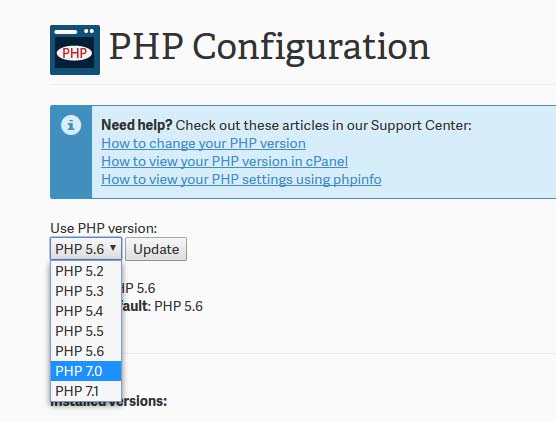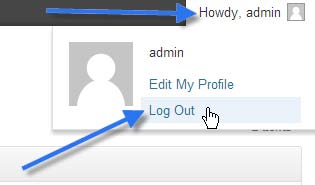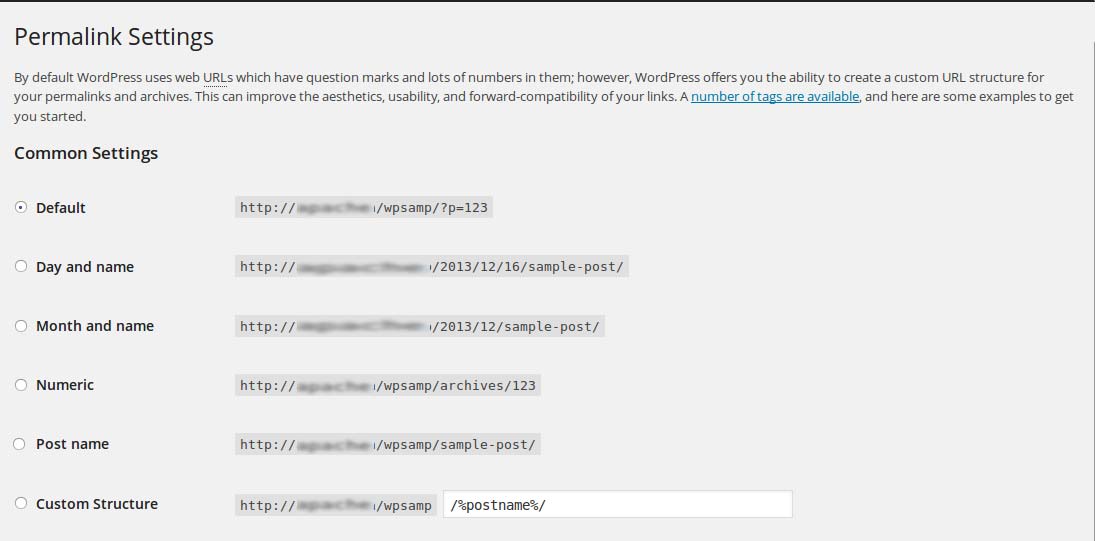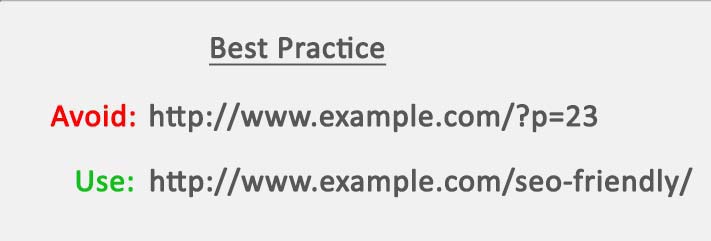WordPress is the leading framework in contemporary content management system (CMS). The intuitive and customizable dashboard which offers unparalleled ease in content publishing render WordPress user-friendly for seasoned as well as amateur developers.
The flexibility of WordPress usage doesn’t guarantee absolute immunity from mistakes. Inadvertent errors on the part of user can make website vulnerable to security threats and can take toll on its performance. Not only novices but seasoned professionals too often commit mistakes which are avoidable.
This post focuses on the common WordPress mistakes for beginners and draws extensive insights from the experiences of users of various expertise levels over the years. Focusing on these would help you steer clear of common traps and pitfalls.
- 1st Mistake: Not taking backup of the site
- 2nd Mistake: Not updating the host PHP
- 3rd Mistake: Relying on Web Hosts offering Cheap Services
- 4th Mistake: Editing your site in live mode
- 5th Mistake: Retaining plugins no longer in use
- 6th Mistake: Uploading large sized images
- 7th Mistake: Not Installing a Cache Plugin
- 8th Mistake: Not using CDN or Content Delivery Network
- 9th Mistake: Using ‘Admin’ as default username
- 10th Mistake: Not Factoring in Updates by WordPress
- 11th Mistake: Not Updating the Permalinks Structure
- 12th Mistake: Keeping the Sample Page Intact
- 13th Mistake: Not moderating inappropriate comments
- 14th Mistake: Not Installing Google Analytics
- 15th Mistake: Blocking the Indexing by Search Engine
- 16th Mistake: Not Making Provision for a ‘Contact Us’ form
1st Mistake: Not taking backup of the site
Often developers conveniently forget to back up the site because of the tediousness and complexity involved in the process. It is quite possible that during running an update, the entire site can crash unexpectedly. In such an event, you would have to swiftly get the error fixed to avoid costly downtime. If you would have backed up your site, it could have been easily rolled back to a previous functional date.
Make it a point to essentially backup your site prior to making any significant change in it. Commonly, WordPress plugins or theme are subjected to updates. If you are running short of time for taking backups, you can install a free WordPress plugin that can automatically take backups at scheduled durations on your behalf.
Some of the plugins you can rely on
- BackupBuddy
- UpdraftPlus
- Duplicator
- WP-DB-Backup
- VaultPress (with Jetpack)
2nd Mistake: Not updating the host PHP
PHP, the popular scripting framework, underlies most websites afloat online. With the launch of PHP 7 version, site’s performance has improved phenomenally. You can confront problems while installing a latest WordPress plugin on the web server which has not been upgraded to latest PHP version. The outdated script can pose challenges during plugin installation and can severely compromise the performance of your site.
One of the WordPress best practices 2020 is to keep your PHP updated to the most recent version. You can do so from ‘PHP config’ or ‘PHP settings’ menu accessible after logging in hosting account of yours. Based on host, the menu name may vary. You can easily track the version of PHP over here for upgrading the same. The support team of the host must be contacted if you are stuck with something.
Solution:
- Login to CPanel
- Check for Software section
- Click on PHP Configuration
- And Update
If you are not able to find solution by yourself check with your hosting provider for updating the PHP version.


3rd Mistake: Relying on Web Hosts offering Cheap Services
Often in a bid to save few bucks, we trust web hosts offering services at cheaper rate. This may appear appealing initially but in the long run can dent site’s security and your popularity irreparably. Your site or blog is a powerful medium for keeping loyal customers engaged and for attracting newer prospects. Most developers focus more on creating compelling content and overlook the importance of choosing reputable web host.
This happens because businesses, primarily new on internet or on shoe string budget, don’t care to assess the hosting requirements and opt for the most inexpensive plan. This leads to undermining of the site’s security, ease of use, and responsiveness. However, this doesn’t imply that you should go for the costliest web host. Choice of web host must be made after establishing your site’s goals and quantum of traffic you expect in the long haul.
Invest quality time in going through the offerings of various hosts and feedbacks about them posted online. You can land on the social page of a preferred host and read the reviews of clients for making a conscious decision.
4th Mistake: Editing your site in live mode
One of the common WordPress mistakes to avoid is not to test changes in a staged environment. Live site editing must become a taboo for you. Get WordPress installed as a local copy on your computer and then build your site or do necessary editing.
After completing the task, you have the option of uploading the site copy directly to live server from local host. But refrain from this practice as a functional copy of site on local host can behave abnormally on live server. Setting errors right on a live site version can dent your brand’s credibility, popularity and SERP ranking.
Before uploading changed web version to live server, test its functioning in the staging area. This sub-domain restricts access but offers a platform for testing the modifications made on site, new functions incorporated and any other amendments made. Always upload your site to live server after testing it in staging area.
Solution: Develop your website on local server like XAMPP or Wamp and then finally upload in live server. If you don’t no to configure the local server, block the website from search using robots.txt file.
Important Note: Don’t forget to change the localhost links after uploading to live server.

5th Mistake: Retaining plugins no longer in use
You would come across numerous useful plugins but you can’t install all of them. Plugins are codes which upon installation take WordPress site’s functionality to the next level or facilitate adding new features.
Each plugin that is installed occupy server space upon activation. This can compromise your site’s performance and responsiveness substantially. Some shady plugins can also breach your site’s security cover.
Remember to go through the plugins section periodically for deleting those which no longer are serving any useful purpose. Other plugins should also be updated as soon as newer versions are available to assure streamlined site operability.
Important Note: Remove unused plugins and clean their database tables
6th Mistake: Uploading large sized images
Images supplement the usability of your site’s content, allows audiences to visually understand the import of topics, and bolster your brand’s reputation. Images facilitate seamless browsing experience. Site traffic can be boosted significantly and surge in sales can be triggered if the images are SEO optimized with proper keywords and tag descriptions.
If high resolution images with large file sizes are uploaded to site, the loading speed of page would be reduced dramatically. This would lead to increase in bounce rates and even qualified leads would not convert. Web optimized images should be used always for ensuring smooth functioning of site.
Solution: Compress the images using any reliable plugins like reSmush.it, WP Smush etc.
Important Note: Optimizing images will reduce your website loadtime.
7th Mistake: Not Installing a Cache Plugin
Any WordPress website must have a cache plugin. The plugin serves to maintain the copy of webpages frequently accessed which facilitate faster loading of site for users. When arriving at a cache plugin most conducive to your site needs, you must compare the advantages offered with the relative cost incurred for the plugin. You can go for free plugins like Breeze which also offers numerous benefits.
Solution: Some of the plugins you can rely on
8th Mistake: Not using CDN or Content Delivery Network
As a beginner, you would find your WordPress website not loading at optimal speed. This can be attributed to the absence of CDN. A CDN is connected to servers’ network positioned across the globe. It keeps storing the static elements of the WordPress website.
As soon as the page is requested by a visitor, the CDN server comes into action and provides the static section of the page. Next, the original server takes over and starts providing the dynamic elements. This expedites the page loading time even for those visitors who may be located at a significant distance from the server that is hosting your site.
Important Note: Fast loading websites will impact in your website rankings in Google.
9th Mistake: Using ‘Admin’ as default username
As a beginner, you often overlook the WordPress site’s username which results in ‘admin’ being used by default. This oversight can prove costly as security related vulnerability increases.
Admin is the default username created and you must change it at the earliest. Navigate to the WordPress dashboard and then create a new user with Administrator’s privileges.
Solution: Use “All In One WP Security & Firewall” plugin for enhancing your website security
Important note: Changing default username and login URL will helps to secure the website from being hacked.

10th Mistake: Not Factoring in Updates by WordPress
While starting with WordPress, the term ‘update’ can appear daunting. However, embracing new updates the moment they are released is a good proposition. This would thwart potential of hacking of your site or compromising of site’s security. Always manage your WordPress site carefully and install the updates for keeping the site upgraded for adherence to latest security and performance benchmarks.
Your initial reluctance to adopt updates can make the process harder at later stage. The process of upgrading to a newer WordPress version is not a difficult process. You can accomplish the same by a single click. Proper coding of theme and plugins would ensure smooth functioning of your site. Always take backups before updating.

11th Mistake: Not Updating the Permalinks Structure
It is common with most developers to keep using the default /?p=23 URL structure. This does not augur well for SEO and also is not beneficial from the perspective of users. After installing WordPress, the permalinks structure should be updated from Permalinks option under Settings menu.


Important note: Changing the non friendly urls to keyword friendly urls will helps you to rank better in Google.
12th Mistake: Keeping the Sample Page Intact
The default about page that WordPress came equipped with has now been substituted by default sample page. If you google WordPress sites, you would find that more than a million sites still are retaining the default sample. Look for this page and delete it earnestly. Keep deleting the sample page a priority on your new wordPress website checklist.
Important note: Delete the pages from (Trash) option too are else you cannot able to add the new page with same url.
13th Mistake: Not moderating inappropriate comments
When you seek WordPress development support from lesser known or relatively inexperienced web design services, you remain unaware of the imperatives for successful site management. Once the realization dawns on you, you stare in the fact of significant task list which becomes difficult to handle. One such field relates to comments of users which if not moderated on time can dent your brand’s reputation irrevocably.
Solution: Always moderate the comment before approving. Use the required settings as given below.

14th Mistake: Not Installing Google Analytics
Once you have installed WordPress, you must immediately get Google Analytics installed. The insights offered by Google Analytics can help you a lot in analyzing site’s traffic, formulating strategies that resonate with users’ temperaments and serving optimized content good for SEO.
15th Mistake: Blocking the Search Engine Indexing
In this age of SEO, a site that doesn’t appear in the search engine result pages for relevant organic searches loses popularity and credibility quickly. No genuine user would land on your site. WordPress, by default, allows indexing of your site’s webpages by search engine crawlers.
This feature is often disabled by beginning developers to keep half edited pages from showing up in search results. However, frequently you forget to turn on this functionality once the job is safely done. This would result in thinning out of traffic landing on your site and your pages would stop appearing for relevant search query results. It is advisable to consult the experts of renowned web design company like PGBS for proper fixing the errors of indexing.
Important note: Uncheck the “Search Engine Visibility” option if selected.

16th Mistake: Not Making Provision for a ‘Contact Us’ form
The ‘Contact Us’ form must appear on your WordPress site. If the contact page is lacking this inevitable form, restore it ASAP. It is a common blunder not to include the contact form even after publishing the email and phone number(s) over which you want visitors to connect with you.
Contact form is an essential medium through which site visitors can immediately get in touch with site administrator to highlight their concerns. This prevents the hassle of keying in your email address on a different mail client or spending few bucks on calling you up. The most recent WordPress plugin for contact form should be installed to facilitate ease of communication.
Category-Wise WordPress Best Practices
Conclusion
You, by now, have acquainted yourself with the common mistakes committed during developing WordPress site from scratch or while offering website maintenance services. Steer clear of these mistakes to ensure streamlined functioning of the website and zero hassles later on.
